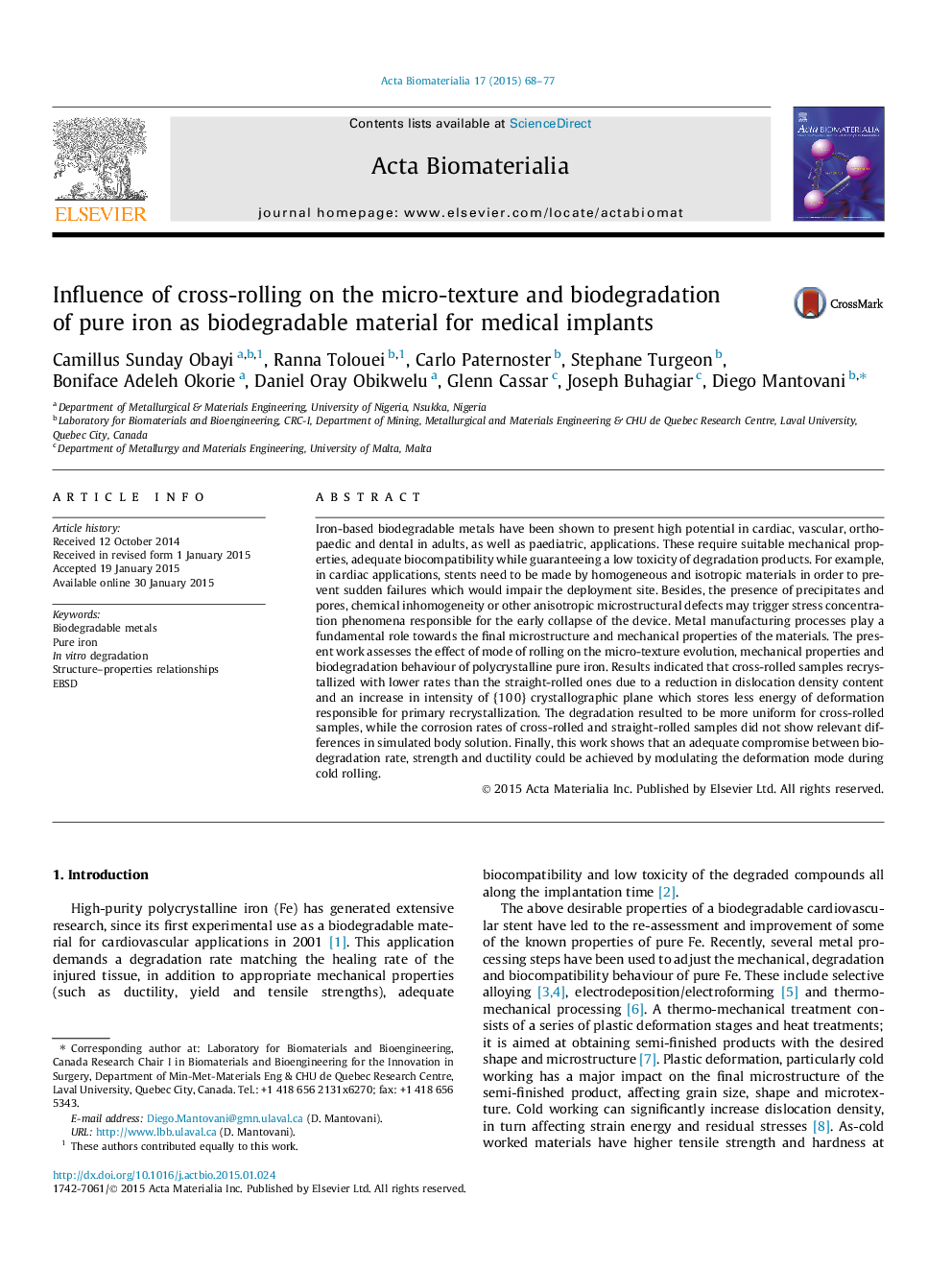| Article ID | Journal | Published Year | Pages | File Type |
|---|---|---|---|---|
| 317 | Acta Biomaterialia | 2015 | 10 Pages |
Iron-based biodegradable metals have been shown to present high potential in cardiac, vascular, orthopaedic and dental in adults, as well as paediatric, applications. These require suitable mechanical properties, adequate biocompatibility while guaranteeing a low toxicity of degradation products. For example, in cardiac applications, stents need to be made by homogeneous and isotropic materials in order to prevent sudden failures which would impair the deployment site. Besides, the presence of precipitates and pores, chemical inhomogeneity or other anisotropic microstructural defects may trigger stress concentration phenomena responsible for the early collapse of the device. Metal manufacturing processes play a fundamental role towards the final microstructure and mechanical properties of the materials. The present work assesses the effect of mode of rolling on the micro-texture evolution, mechanical properties and biodegradation behaviour of polycrystalline pure iron. Results indicated that cross-rolled samples recrystallized with lower rates than the straight-rolled ones due to a reduction in dislocation density content and an increase in intensity of {1 0 0} crystallographic plane which stores less energy of deformation responsible for primary recrystallization. The degradation resulted to be more uniform for cross-rolled samples, while the corrosion rates of cross-rolled and straight-rolled samples did not show relevant differences in simulated body solution. Finally, this work shows that an adequate compromise between biodegradation rate, strength and ductility could be achieved by modulating the deformation mode during cold rolling.
Graphical abstractFigure optionsDownload full-size imageDownload high-quality image (141 K)Download as PowerPoint slide
